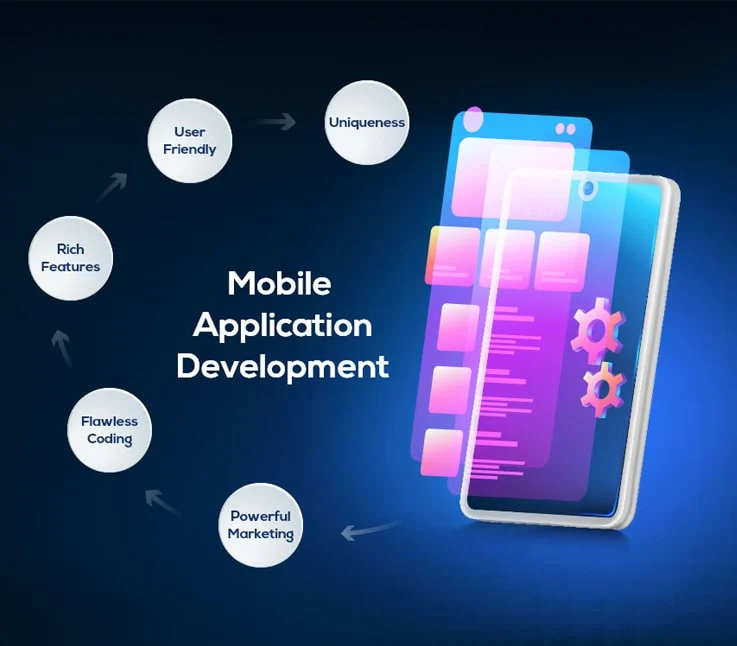From Concept to the Google Play Store: The App Development Lifecycle Explained

From Concept to the Google Play Store: The App Development Lifecycle Explained
You know that moment when you’re lying in bed thinking, “Wait, what if someone made an app for this?” Yeah, that spark right there is how it all begins. The journey from concept to the Google Play Store sounds exciting — and it is —, but there’s a lot more coffee, chaos, and collaboration than people realise.
Everyone Starts with a Scribble
Most apps are born from scribbles on napkins, half-asleep voice notes, or random “what if” thoughts. There’s no perfect start. I once met a developer who built a shopping list app just because he forgot milk three times in a week. True story.
Writing Down Every Wild Idea
Before things get real, you just jot down whatever makes sense (and what doesn’t). It’s like downloading your brain before it crashes. You’ll sort it out later.
Asking, “Would Anyone Actually Use This?”
Good question, right? That’s where validation sneaks in. Developers and dreamers alike talk to people, float ideas online, or even make tiny prototypes to test the waters.
The Research Rabbit Hole
Ah, the stage where you lose track of time. Market research, competitor analysis, user personas — the works. You’ll find yourself studying what big apps did right and what they royally messed up.
Finding Your Edge
The best apps do one thing really, really well. Whether it’s a to-do list or a language learning tool, your edge is your secret sauce.
Partnering with the Right Experts
This is where calling an Android application development company makes sense. You get access to minds that understand both design and tech.
A Team That Gets Your Vision
Developers, designers, and managers who can translate your late-night doodles into wireframes — those are your people. Not all heroes wear capes; some write clean code.
Playing Tech Puzzle
Choosing the right tech stack feels like picking a pizza topping — everyone’s got an opinion. But choosing wisely sets your foundation. Go too fancy, you risk overkill; go too simple, you’ll hit limitations later.
Time to Build… But Not Fully Yet
Before writing a single line of real code, teams usually build a prototype or MVP (Minimum Viable Product). It’s like showing off a demo reel — good enough to impress but still far from done.
Iterate. Test. Repeat.
Here’s the truth nobody tells newcomers: building an app means rewriting it, a lot. Bugs? Always. Design tweaks? Constant. It’s normal. The great apps you love went through dozens of near-meltdowns before success.
The Emotional Rollercoaster Phase
Every developer has that “why isn’t this working” night. It’s part of the process. Somewhere between caffeine and debugging, the magic happens.
Testing Isn’t Optional
When your app finally feels like it works, think again. Testing catches the gremlins hiding in the code. From crashes to awkward button placements, testers save you from one-star reviews.
Real-User Feedback Hits Hard
The first feedback from real users is priceless. Sometimes it’s a pat on the back; other times it’s brutal honesty wrapped in sarcasm. Either way, it makes the app stronger.
The Big Day: Publishing on the Google Play Store
You’d think pressing “Publish” would be the end. Nope. It’s more like stepping onto stage one. From optimizing descriptions to setting screenshots, there’s an art to launching.
Keywords, Icons, and First Impressions
Your app’s Play Store page is its handshake. Get the visuals right, make the title searchable, and write a description that feels like a chat, not an ad.
Waiting for Approval
The waiting game is oddly nerve-wracking. But once your app goes live — oh, that rush! Seeing your creation out there is something else.
Post-Launch Reality Check
The story doesn’t end at launch. It’s just a new chapter. Updates, responses, analytics, user feedback… welcome to the real grind.
Marketing Your Masterpiece
You could build the next gen app, but if no one knows, it’s like shouting into a void. Social media buzz, influencer reviews, or even good ol’ word of mouth — get creative.
Analytics Tell the Truth
Numbers don’t lie. They’ll tell you where users drop off, what features matter, and what no one cares about. Use them like a compass.
Keeping the Spark Alive
App evolution never stops. Regular updates show users you care. Fix bugs quickly, add new features occasionally, and keep communicating.
Building a Community Around the App
Best apps become conversations. Get users involved, listen to their ideas — you’ll be surprised how loyal they become when they feel heard.
Bonus Tips & Discoveries
Pour yourself another coffee for this part — it’s bonus time, friend.
Don’t Fear Small Beginnings
Even Android game development companies you admire once started small. The first version might look clunky, and that’s fine. Every hit app looked rough in its early days.
Learn from iOS Too
If you peek at what iOS game development companies do differently, you’ll notice cleaner design standards and a focus on user flow. Borrow ideas shamelessly; innovation often starts with inspiration.
Keep the Human Touch
It’s tempting to get lost in analytics and automation — resist that. The best apps feel like they were made by humans for humans. Add a bit of charm, humor, or even an Easter egg somewhere.
The Fun in the Chaos
In the end, the app development lifecycle isn’t a clean roadmap. It’s a chaotic, thrilling, slightly caffeinated ride — full of lessons, bugs, breakthroughs, and those “aha” moments at 2 a.m. And if you ever feel lost, just remember why you started. Probably with coffee on the table and a dream worth chasing.
- Art
- Causes
- Best Offers
- Crafts
- Dance
- Drinks
- Film
- Fitness
- Food
- Games
- Festival
- Gardening
- Health
- Home
- Literature
- Music
- Networking
- Other
- Party
- Religion
- Shopping
- Sports
- Theater
- Wellness



